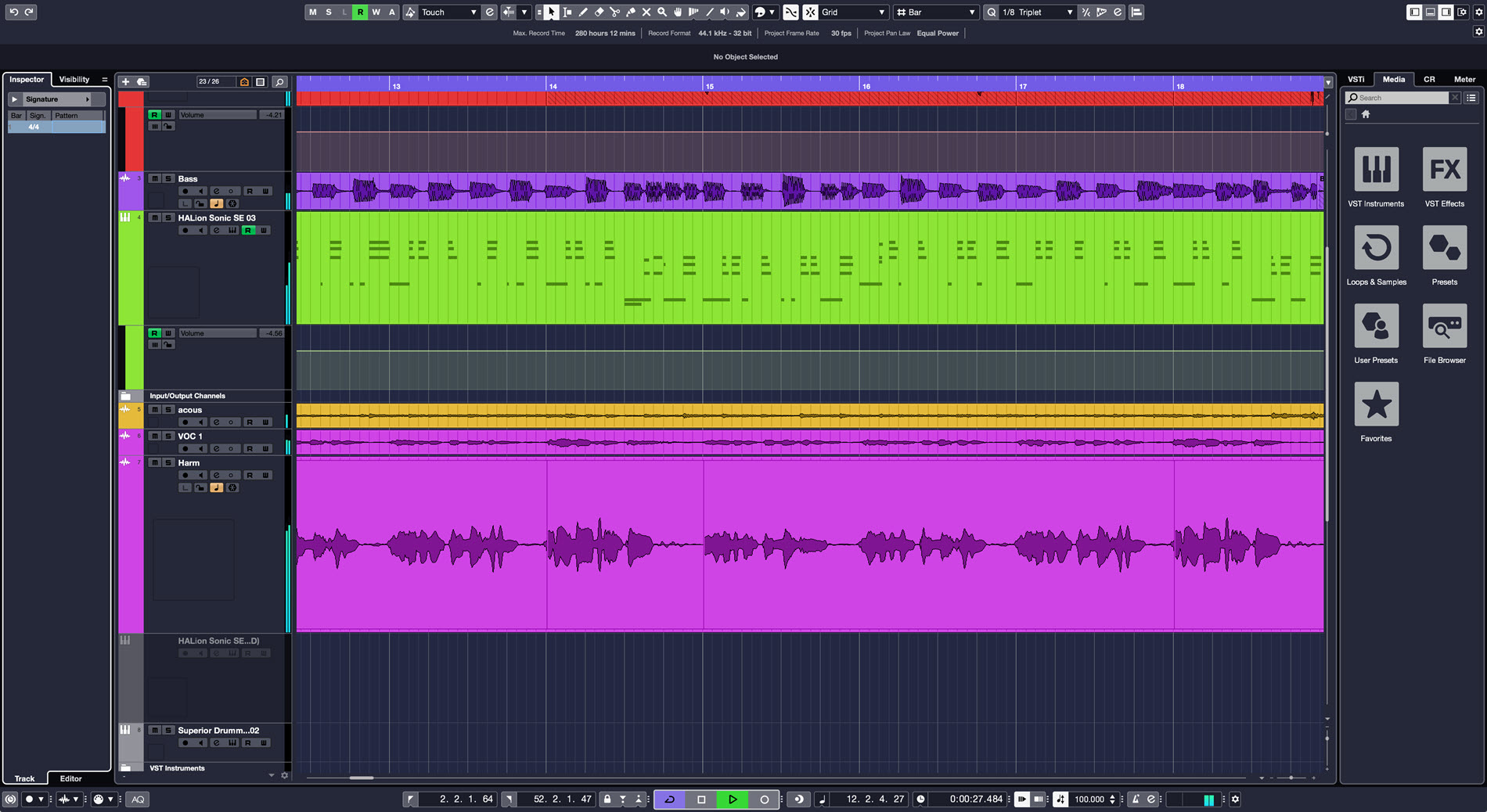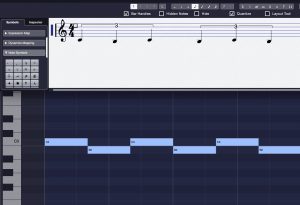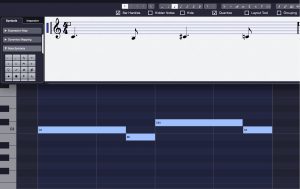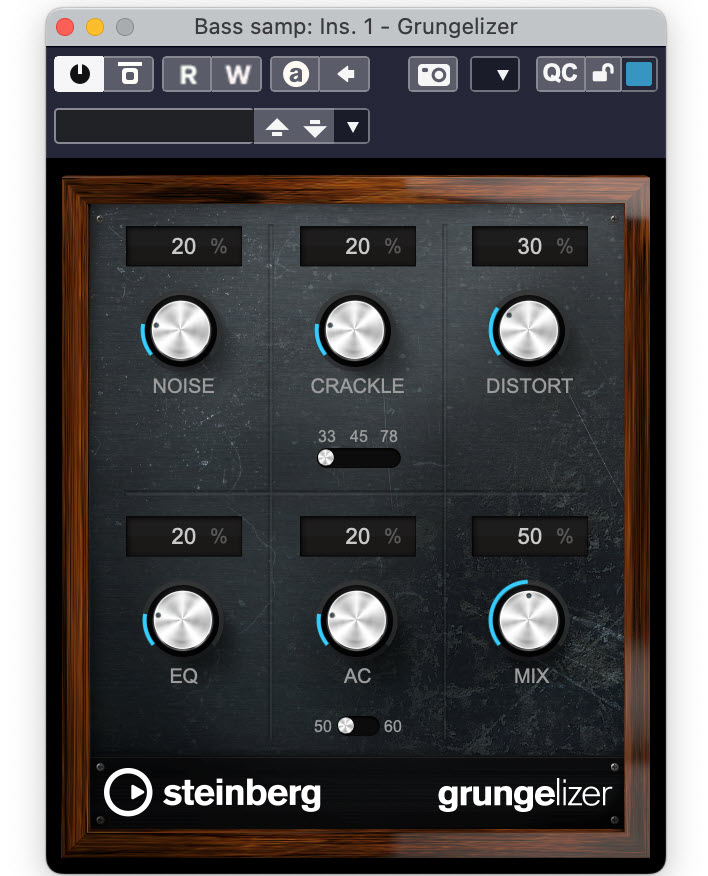Tagged Under:
Music Theory for Producers, Part 1
Rhythm concepts that all producers should know.
With today’s technology, it’s entirely possible to produce songs and beats in a DAW, looper or sampler without knowing music theory. In fact, one can make an argument that doing everything based on what you hear rather than what’s written on a page helps you develop your musical ear.
But you really need both a good ear and at least some knowledge of music theory, or you’ll be at a significant disadvantage compared to your musically trained peers. Without theory, you’re flying blind.
Music theory is a vast subject that’s impossible to cover comprehensively in a two-part posting like this (or even a ten-part blog, for that matter!). So what I’ll do instead is discuss some key aspects that will help you better understand what you’re doing when creating music. In this installment, I’m going to focus on rhythm; in Part 2, I’ll continue with a look at basic chord structure.
Quarterly Results
You may not realize it, but even if you’ve never learned any music theory, you’re actually dealing with it all the time because in any graphic editing window in any DAW — for example, the Project Zone in Steinberg Cubase — your project is organized in bars and beats.

Those bars (aka “measures”) are the same as those used in written music. They provide a way to divide a song into short sections that are easy to work with and visualize, as opposed to having to constantly look at the entire song, which could get incredibly confusing!
The time signature (also sometimes called “meter”) is a fractional number that describes the rhythmic content of each measure. The number on the top tells you how many beats there are in the measure; the bottom number tells you the rhythmic value (the “subdivision”) of those beats. The most common time signatures are 4/4 (four beats per measure, with each beat being a quarter-note), 3/4 (three quarter-note beats per measure), 6/8 (six eighth-note beats per measure) and 12/8 (12 eighth-note beats per measure).
In 4/4 time, each measure lasts four quarter-notes. The tempo will determine how fast those quarter-notes go by. At any tempo, four quarter-notes equal the same duration as eight eighth-notes, sixteen sixteenth-notes, and so on. Within a measure of 4/4 time, you can have any combination of note (and rest) durations as long as they add up to the equivalent of four quarter-notes.
Counting quarter-notes is easy: Just go, “One two three four; one two three four,” etc. Here’s an exercise to try: Turn on the click track in your DAW and set it to a comfortably slow tempo, say around 80 bpm (beats per minute). Now count along with the click, which by default is set to quarter notes.

Next, with the click still going, count eighth notes, as follows: “One and two and three and four and …”

Finally, sixteenth notes: “One ee and a; two ee and a; three ee and a; four ee and a,” and so on.

In any time signature, the downbeat is usually defined as the first beat of a measure, or “One,” if you’re counting. Here’s how to count in some other common time signatures.
- 2/4: Contains two quarter-notes per measure. Count it “One two; one two,” etc.
- 3/4: Contains three quarter-notes per measure. Count it “One two three; one two three,” etc. Notice how different the feel is in 3/4, which is sometimes called a waltz meter.
- 6/8: Six eighth-notes per measure. Count it “one two three four five six; one two three four five six,” etc. This is sometimes called a shuffle meter.
Let Me Emphasize
Beyond just the count itself, the beats that get emphasized in a measure have a lot to do with the “feel” or “pulse” of the rhythm. If you’re working in EDM or one of its numerous subgenres, many songs have a “four on the floor” feel, which means that each quarter note gets equally emphasized (“stressed”).
Beats two and four of a measure (the backbeats) are frequently emphasized in pop, rock, blues, country and many other genres. In 4/4 time, drummers usually hit the snare drum on the two and four (“one TWO three FOUR”), and the bass drum on the one and the three (or, in this particular case, the ONE, the THREE and the “THREE AND”).
You’ve probably heard the term syncopation in reference to rhythms. If a rhythm emphasizes an offbeat, such as an eighth- or sixteenth-note, it’s considered syncopated. Here’s an example of a syncopated drum beat:
Triple Down
When you open the quantize window in your DAW, you’ve no doubt noticed the choices that say 4T, 8T, etc. Those refer to triplets, which subdivide a beat (such as a quarter-note, eighth-note or sixteenth-note) into three equal parts.
This is a concept that can get confusing because an eighth-note triplet’s duration equals a quarter note, whereas a quarter-note triplet’s duration equals a half note:

This becomes more apparent when you try counting it. A measure consisting of straight eighth notes would be counted, “One and two and three and four and,” but the way to count a measure with eighth-note triplets is, “One trip let; two trip let; three trip let; four trip let.”
In the following example of eighth-note triplets, you’ll first hear a four-beat countoff and a click. The triplets, played with a tambourine sample, are panned to the left and the click track is panned to the right.
Eighth-note triplets are also the basis for playing a swing feel. In the following example, you’ll first hear two bars of a basic rock beat with regular (“straight”) eighth notes on the hi-hat. When it repeats, the eighth notes are “swung” — the first two beats of each triplet get played as one quarter-note instead of two eighth-notes. The kick and snare stay the same, but adding those swung eighth notes changes the feel to a shuffle.
The other types of triplets you’ll encounter are usually of the quarter-note variety; these are twice as long as eighth-note triplets. They’re a lot harder to count evenly, as they feel as if they’re pushing against the beat. Here’s an example with a four-beat countoff; again, the click track is panned right and the quarter-note triplets (this time played on a hi-hat) are panned left.

Another symbol you’ll see in your quantize settings is a dot after a note value. A dotted note lasts one and a half times as long as a non-dotted one. For example, a dotted quarter note lasts for one and a half quarter notes which is the same as three eighth notes.

The Takeaway
As you can see, when you’re working in your DAW, you’re using rhythmic concepts that are the same as they are in written music. Knowing what they mean will help you when you’re writing and arranging music — and hopefully this additional perspective will inspire you to keep learning.
Check out our other Recording Basics postings.
Click here for more information about Steinberg Cubase.













